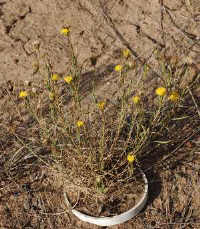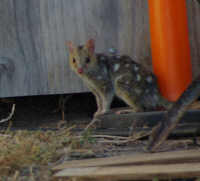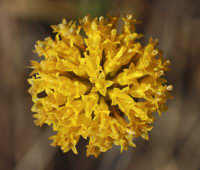 MT. ROTHWELL SANCTUARY VISIT MT. ROTHWELL SANCTUARY VISIT
|
|||
| Complied by Daryl Akers and Frances Overmars 18/12/06 | |||
| Photographs by Ian Bell | |||
|
Members from both the Melton Environment Group and Pinkerton
Landcare & Environment Groups, their families, friends and visitors
enjoyed their evening at Mt. Rothwell Sanctuary. Cr. Bob and Denise Fairclough from the City of Wyndham formed part of the group, as well as Linda Bradburn from the Shire of Melton. We arrived in the late afternoon and and were guided by Irene Cook a previous volunteer with Earth Sanctuary (as it was then known), to the mixed species revegetation plantings surrounding a large oval depression in the main paddock, we also saw a few kangaroos. From here we went to the lower lying clay soil areas where we saw wildflowers in the native grass areas and a special planting which had been undertaken by Friends of Geelong Botanic Gardens which included the nationally significant button wrinklewort sourced from the Truganina Cemetery. It was marvellous to see how this little plant which was in full flower, had survived the harsh drought conditions. |
|||
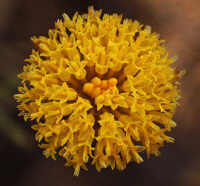 |
Re-introduced to the area - Rutidosis leptorynchoides or as commonly known Yellow Button Wrinklewort. Click on a framed photo to see an slightly larger photo (<25kb) |
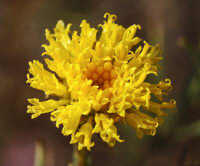 |
|
| We then enjoyed a barbecue at the caretakers cottage, while admiring the
splendid view of the setting sun over the western plains from this
elevated position. Paul Stewart-Higgs, the ranger looked after us well and
during the barbecue he introduced a surprise, a visit from a quoll, that
is one of two that live in the equipment shed besides the caretakers
cottage, we were able to have a good look at it before he placed it on the
ground and it scurried back to the shed. These were once very common but
are now extinct on the mainland and are now only found in Tasmania.
These little quolls also used to be numerous in the western volcanic
plains. The following quote shows how they provided entertainment at the
Truganina School, in the City of Wyndham. This description applies to the 1870's period. Geo. Green, Head
Teacher, Truganina 1932- 1935
|
|||
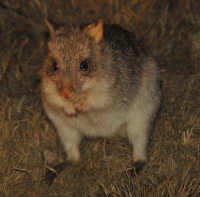 |
|||
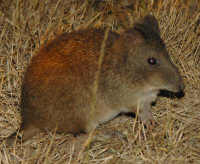 |
Comment:
It was lovely to see the little animals that are generally extinct on mainland Australia. Frances |
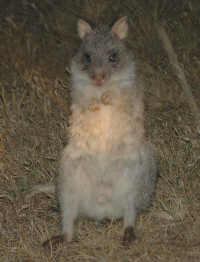 |
 |
 |
About 20 people in all
took part in a dusk walk at Mt Rothwell wildlife sanctuary near Little
River, at the northern end of the You Yangs. Mt Rothwell is a granite
outcrop that is protected by a predator-proof fence that excludes cats and
foxes. Surrounding this is an expanse of native grassland in which mobs of
Grey Kangaroos can be seen grazing. We set off at dusk, accompanied by our guide, Annette, along a track where we saw a wealth of native mammals that were once common in this region, many of which have now vanished completely from the Australian mainland. As well as Southern Brown Bandicoots, we saw 4 species of wallaby, ranging from the rat-sized Long-nosed Potoroos, the larger rabbit-sized Rufous Bettongs, to the larger Red-bellied Pademelons. There were also Brush-tailed Rock Wallabies on the rocky outcrop itself. Several Eastern Quolls could also be seen around the base of the outcrop. |
||
| These animals, though wild, were quite unafraid, and we were able to see
them quite close-up in the spotlight. In the absence of cats and foxes,
all these animals were breeding and flourishing quite prolifically,
despite the severe drought conditions. This is an experience that should not be missed, as these animals will not be seen elsewhere, except in places like this. It was a privilege to see the wildlife that was once so common around here. |
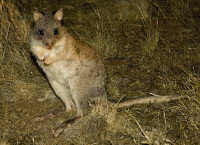 |
||
| Back | |||
